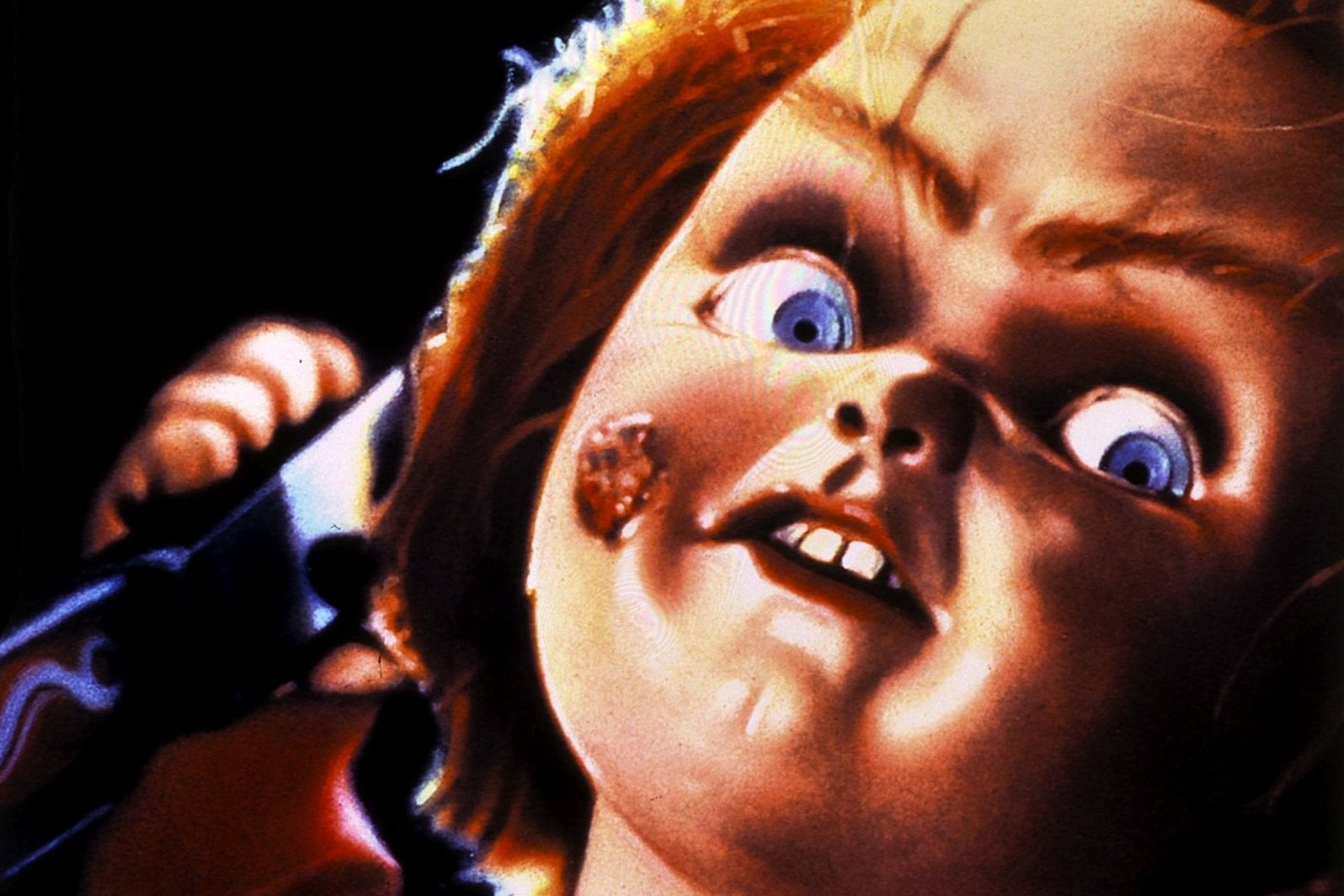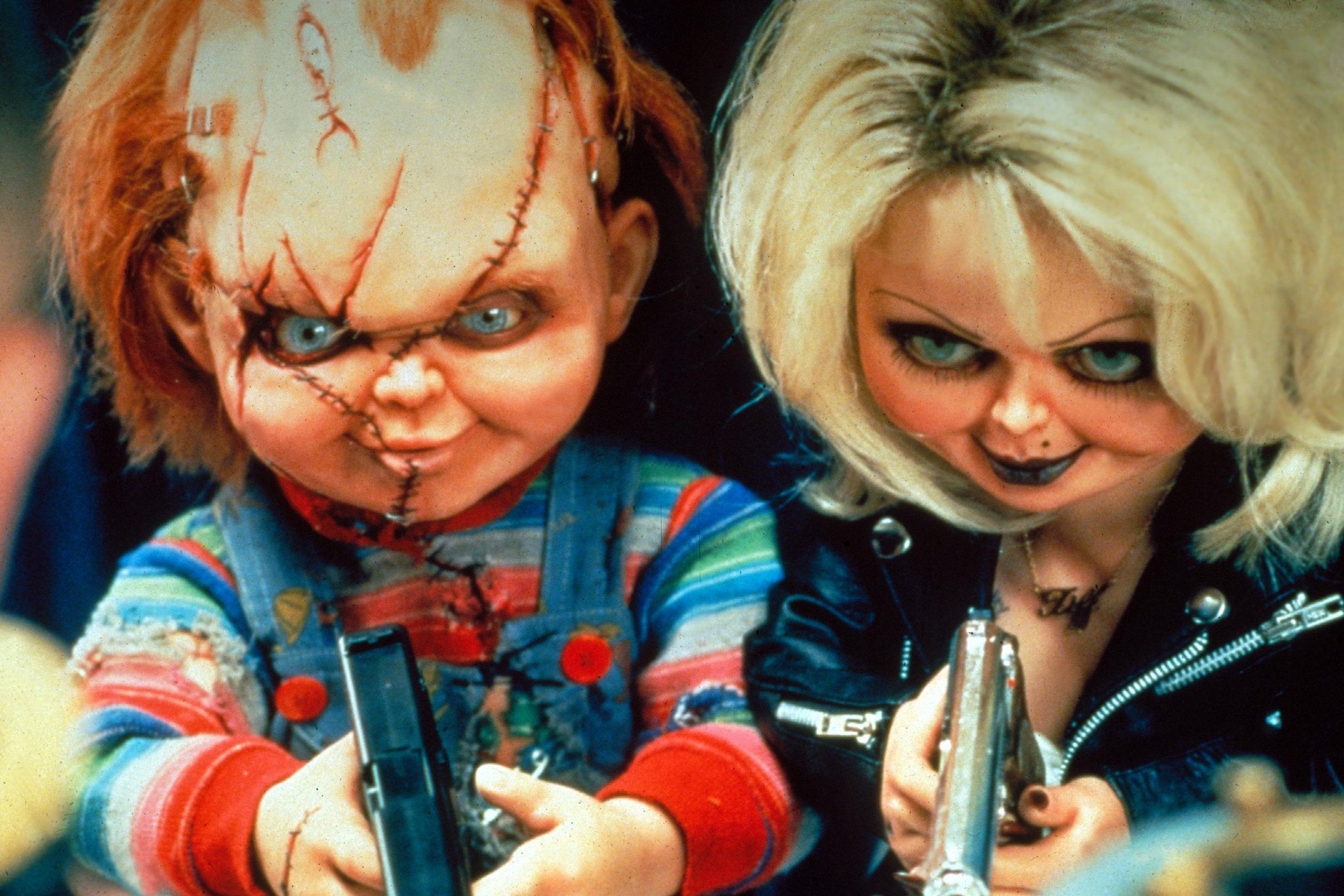Child's Play at 30: Why Chucky remains horror's permanent underdog
The planned reboot of the classic slasher film is doomed to fail, argues Clarisse Loughrey


Your support helps us to tell the story
From reproductive rights to climate change to Big Tech, The Independent is on the ground when the story is developing. Whether it's investigating the financials of Elon Musk's pro-Trump PAC or producing our latest documentary, 'The A Word', which shines a light on the American women fighting for reproductive rights, we know how important it is to parse out the facts from the messaging.
At such a critical moment in US history, we need reporters on the ground. Your donation allows us to keep sending journalists to speak to both sides of the story.
The Independent is trusted by Americans across the entire political spectrum. And unlike many other quality news outlets, we choose not to lock Americans out of our reporting and analysis with paywalls. We believe quality journalism should be available to everyone, paid for by those who can afford it.
Your support makes all the difference.Chucky may just be a toy, but he is resilient. While his slasher compatriots have faced every injustice – in reboots, remakes, and reimaginings – his reign of terror has continued, uninterrupted, across seven films. Chucky has never been launched into space. He has never been dragged into the cinematic gladiatorial ring for Chucky vs Annabelle or Chucky vs the Creepy Twins from The Shining.
He has remained at the centre of a moderately successful 30-year franchise that’s so far grossed over $176m at the box office and survived a downgrade to straight-to-DVD releases, without abandoning the timeline first established in 1988’s Child’s Play. And that is a rare thing.
Regrettably, though, this is all about to change. In July, MGM announced that a reboot of Child’s Play was in development, without the involvement of the franchise’s creator, Don Mancini, or the voice behind the character, Brad Dourif. Inevitably, Chucky received a makeover in the process: a first look image teased brighter, bluer eyes and a flawless complexion.
Perhaps it’s too early to mourn, but it already feels like so much has been lost in the process. As the original Child’s Play celebrates its 30th anniversary, it’s worth remembering that Chucky has always been one of horror’s underdogs – and that is exactly how he should remain.
The character was originally born out of the relatively simple notion that dolls are, in fact, quite scary. The mid-Eighties was the time of the Cabbage Patch Kid, as reports began to spread that parents were fist-fighting in the middle of store aisles in order to get their hands on a toy that, on reflection, looks largely like a potato with two eyes plastered on. Don Mancini, a film student at UCLA at the time, was amused by the idea of a killer doll being a metaphor for a child's unconscious rage.
Originally titled Batteries Not Included, it imagined a doll with the ability to bleed a strange, red substance. A boy named Andy, in an attempt to create a brotherly bond, cuts his thumb and mixes his blood with the doll’s blood. This brings the doll to life, and it starts to kill off anyone who’s ever wronged Andy – his babysitter, his teacher, even his mother.
Mancini thought the film would serve as a satire of advertising’s sinister influence on children, although it also played off our anxieties surrounding the presumed innocence of children (and what happens when that is subverted), but after his script was picked up by United Artists, John Lafia came on board to rehaul the doll’s backstory.
His draft introduced Charles “Chucky” Lee Ray, a notorious serial killer known as the “Lakeshore Strangler”, who transfers his soul into a Good Guy doll through voodoo ritual, after being cornered by police in a local toy store.
The doll is later found by a homeless woman, who sells it to Karen Barclay, a mother desperate to get her hands on the doll for her son’s birthday. Chucky is at first willing to play along as Andy’s “friend til' the end”, but following the revelation that he’ll trapped in his new doll body unless he possesses a human soul, he takes the logical step of any seasoned serial killer and embarks on a murderous rampage.

Watch Apple TV+ free for 7 days
New subscribers only. £8.99/mo. after free trial. Plan auto-renews until cancelled

Watch Apple TV+ free for 7 days
New subscribers only. £8.99/mo. after free trial. Plan auto-renews until cancelled
Further murderous rampages ensue in both Child’s Play 2 (1990) and Child’s Play 3 (1991), as Chucky is melted and dismembered, only to miraculously return each time, angrier than ever before. Although the first three Child’s Play films played the horror relatively straight – or as straight as horror could be for a film about a knife-wielding doll – the gears shifted dramatically in 1998’s Bride of Chucky, which overhauled the franchise into conscious self-parody.
It also, most crucially, transforms Chucky into a kind of antihero, thanks partially to the introduction of Jennifer Tilly’s Tiffany, Charles Lee Ray’s former girlfriend, who also ends up in a doll’s body. The film closes on the birth of their child, revealed in Seed of Chucky (2004) to be the genderfluid Glen[da], voiced by Billy Boyd. With a whole family now orbiting around him, audiences suddenly found themselves rooting for the killer doll, not against.
Although the next two sequels, the straight-to-DVD Curse of Chucky (2013) and Cult of Chucky (2017), shift the tone back towards horror, the franchise’s newfound affection for the character couldn’t be shaken off.

This came to the dismay of many horror fans, but it’s arguably also the reason for the series’s steadiness. Terrors, inevitably, lose their edge after endless repetition, and by Child’s Play 3, the fatigue had already firmly begun to kick in. However, while so many horror franchises have driven stubbornly onwards, hoping to stumble into newfound relevancy, Bride of Chucky embraced the inevitable, recognising that our biggest horror icons now inspire as much affection as they do fear.
Chucky was, in any case, already known for his one-liners, inspired by the taunting humour of A Nightmare on Elm Street’s Freddy Krueger. Mancini was focused early on in making the film’s jokes land, meaning Chucky’s voiced switched from an electronic overlay to voicework by Jessica Walter (best-known for her role in Arrested Development), and finally to Dourif – Walter could make Chucky creepy, but not quite funny.
By embracing the inherent absurdity of a cutesy looking doll who spouts filth and decapitates heads, the Child’s Play series, over time, created its own strange, but welcoming kind of family. Mancini has remained on board as screenwriter, taking over as director for Seed of Chucky (the first four films were directed by Tom Holland, Jon Lafia, Jack Bender, and Ronnie Yu).
So has star Brad Dourif, with his daughter, Fiona Dourif, joining the franchise in 2013. Jennifer Tilly stars both as Tiffany and as Jennifer Tilly, in an act of gleeful parody, in Seed of Chucky. The first film’s child star, Alex Vincent, returned as Andy for the two most recent outings. The downgrade to straight-to-DVD releases even has its advantages, allowing the vibe to remain charmingly lo-fi, in contrast to the sleek look of mainstream horror today.
Indeed, the films have largely resisted the onslaught of CGI, relying instead on a complex system of animatronics and puppeteering. On the Blu-ray release of Cult of Chucky, Mancini notes that it took six different people merely to lift the doll’s eyebrow and turn his head.
How much of this will be carried through to the Child's Play reboot? Even the most optimistic of projections don’t look good. With Mancini, Dourif, and franchise producer David Kirschner all absent from the process, it now falls to the project’s director, The Wall’s Lars Klevberg, and its screenwriter, Tyler Burton Smith, who worked on the 2016 video game Quantum Break.
The plot reportedly riffs on Netflix’s Stranger Things, but with a hi-tech twist, as Chucky will now be a piece of AI gone rogue, terrorising a group of neighbourhood children. However, the Chucky we know and love hasn’t yet been defeated: Mancini has announced a TV series will continue his original narrative arc, with further feature films planned. As Chucky himself once wisely noted: “A true classic never goes out of style.”
Join our commenting forum
Join thought-provoking conversations, follow other Independent readers and see their replies
Comments